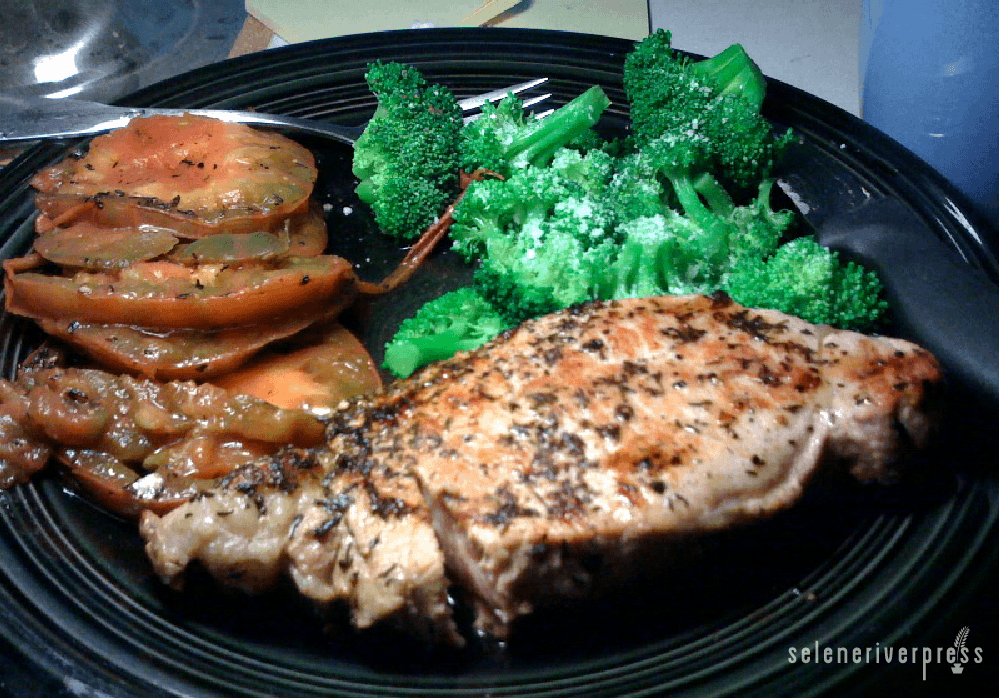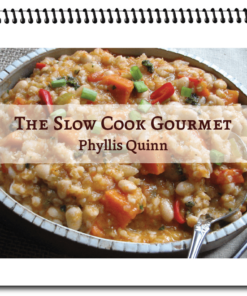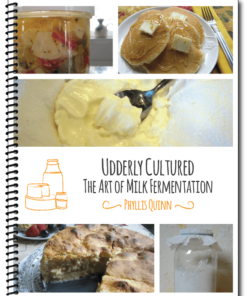Ask Chef Phyllis:
Everything I read or see these days is about brining—from the Thanksgiving turkey to pork and lamb for the grill. Well, I brined ½-inch thick pork chops before grilling them, and they were not only dry but pickled. I wanted juicy and flavorful. They were a lot of prep as well. After work, I wish to make my evening meal less of a hassle. Can you help with something easy?
—Eileen Bostich, Red Feather Lakes, CO
Trends come and go… and you’re so right—for the past few years, brining is in! It’s all the rage in professional kitchens, TV cooking shows, and high-end food magazines. Most experts agree that brining keeps meats and poultry succulent and flavorful even after the intense high heat of the grill. And in the case of a large turkey, brining helps lock in the juices during a prolonged dry roasting time in the oven.
Food preservation was once integral to humanity’s survival. For centuries, salting was in for preserving meat and fish, and it’s a tried and true practice still in use today. In fact, hams cured exclusively with salt and processed without nitrates are highly prized, highly desirable, and, yes, quite expensive.
Brining sounds new, but despite all the hype, it too is an old method for short-time preservation of meat or fish using salt and an acid. This deprives the microbes of oxygen that spoils food. Hunters also use it to help eliminate gamy odors and add moisture to otherwise dry, lean meats such as venison, pheasant, and wild turkey.
See below for a basic brine recipe as well as a delightful brined pork chop with caramelized onions and apples. With chops this juicy, both dishes are sure to please. Without knowing for sure, I think you may have used table salt instead of kosher salt in your brine. Kosher or coarse sea salt is less salty than table salt (really) and preferred for brining.
Brined Pork Chops
This brine can be adjusted for larger meats by increasing the amounts accordingly. For example, tripling the recipe will be sufficient for a 12–13 pound turkey. The brine may be kept refrigerated until you need it. Enjoy!
- ¼ cup kosher salt or coarse sea salt
- ¼ cup honey or pure Grade B maple syrup
- 1 cup hot water
- 1 tablespoon unsulphured blackstrap molasses (optional)
- 2 cloves garlic, minced
- 1 cup cold water
- 1 tablespoon apple cider vinegar (preferred) or sherry vinegar
- 4 (1-inch thick) bone-in pork loin chops, lamb chops, or turkey parts (about 3½–4 lbs. meat)
Special equipment: Large sealable plastic bags or large plastic containers with tight-fitting lids.
Instructions
- If using a sealable baggie, place it in a bowl for easy filling. Alternatively, you may use a plastic container. Add salt, honey or maple syrup, and hot (not boiling) water.
- Stir to dissolve the salt and honey. Add molasses, garlic, cold water, and apple cider vinegar.
- Add the meat and seal the bag. Make sure the meat is completely submerged in the liquid. Place in the refrigerator for at least 2 hours, or as long as 24 hours.
- Grill, pan fry, or roast as usual.
Brined Pork Chops with Caramelized Onions and Apples
Ingredients
- 4 brined bone-in pork chops, ¾- to 1-inch thick
- 1 tablespoon fresh sage or 1 teaspoon rubbed sage (optional)
- 1 teaspoon each ground caraway seeds, celery seeds, sea salt, and black pepper
- 1 tablespoon olive oil
- 2 tablespoons butter
- 1 large red or yellow onion, diced
- 3–4 apples, cored and sliced
- 1 cup fresh apple cider
Instructions
- Pat the brined chops dry with a paper towel. Rub them with the sage, ground caraway, celery seeds, sea salt, and pepper.
- Heat the olive oil and butter in a large cast iron skillet. Sear the pork chops on both sides until nicely browned (about 5 minutes). Remove them to a platter.
- Add the onion and apple slices to the pan. Sauté until the onions are caramelized and the mixture has thickened slightly. Stir in the fresh apple cider and return the pork chops to the pan.
- Cook for about 15–20 minutes more, turning the chops halfway through. Do not overcook. Serve with thick slices of crusty rye bread.

AUTHOR’S NOTE
To choose your organically grown and fresh ingredients wisely, use the following criteria:
- chemical- and hormone-free meat
- wild-caught fish
- pasture-raised, organic eggs
- whole, unrefined grains
- virgin, unrefined, first-press organic oils
- whole-food, unrefined sweeteners
- pure, clean, spring water
- sea salt
- raw and/or cultured milk and cream products
Creative Commons photo by Matt Baume




